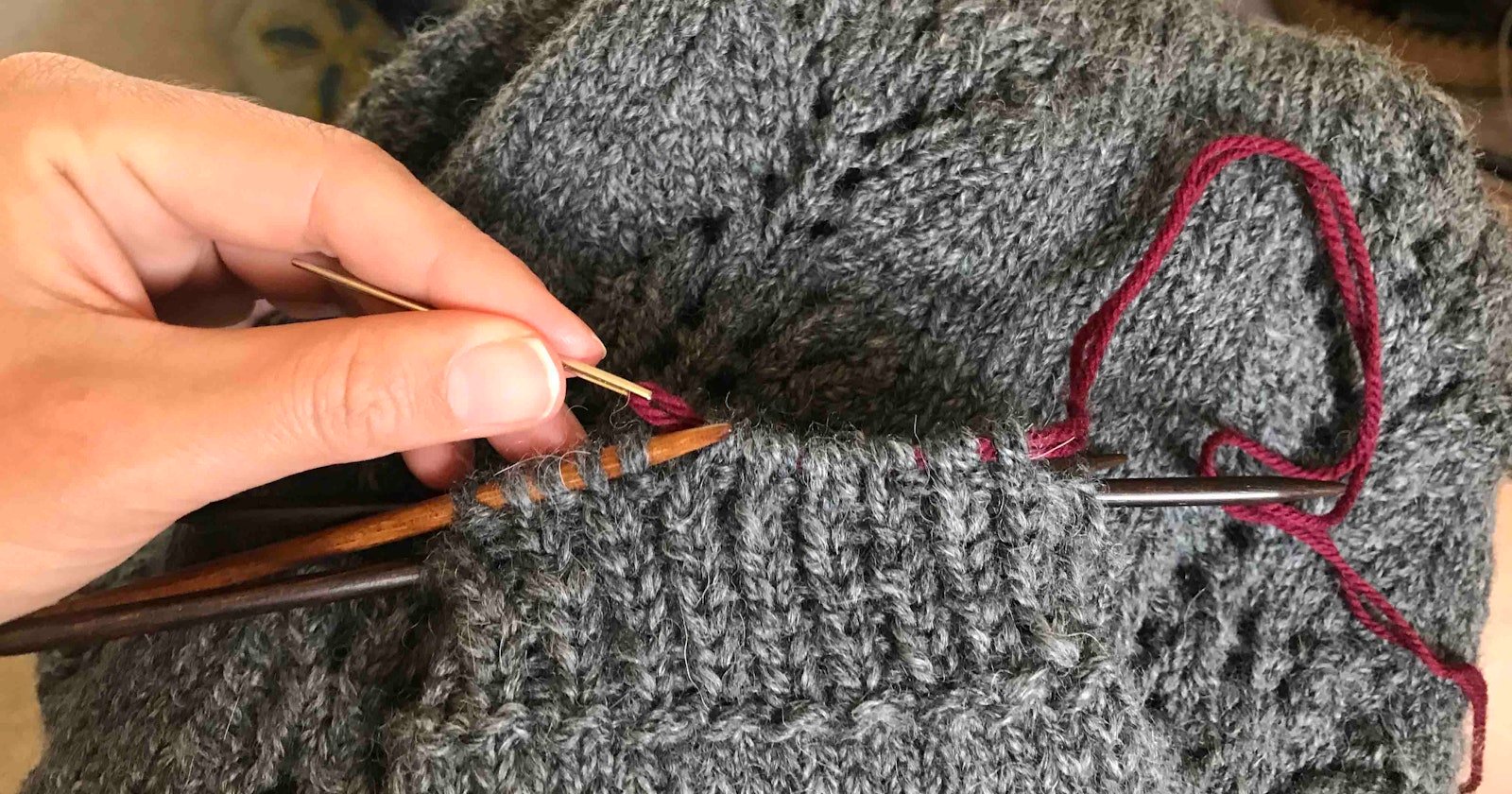The race to the sweater finish line can be a bit stressful, truth be told. Questions such as “Will it fit?” or “Is my cuff bind-off too tight?” can begin to haunt us as we knit. As I worked on my Moonflower Dolman knitted from my own handspun yarn this summer, I was determined to have it ready to wear to the Madison Knitters’ Guild in. It was a close call, but don’t worry-—this is a happy sweater ending!
Kate gave a presentation to the Madison Knitters’ Guild wearing her Moonflower Dolman, hot off the needles. Photo by Crystal Berry
I started this fun sweater at the end of July and wrote about the planning stage and scaling up from swatch to sweater in past posts. I enjoyed this project to the very end, where I finished a well-designed garment with a tubular bind-off.
The Moonflower Dolman calls for a tubular bind-off at neck, cuffs, and hem. Photo by Kate Larson
Bind Off Bliss
Although I had learned several tubular bind-off methods, I had not yet used a tubular bind-off as extensively as this pattern suggests. My earlier experiences were that it was fussy and difficult to keep consistent. Practice makes perfect, as usual, and after completing this project, I want to put a tubular bind-off on everything I make in the future! (I’m only sort of kidding.)
I have two tubular tips that really helped me improve my bind-off. Pattern designer Kiri Fitzgerald used a slightly different setup for this tubular method in the round than I had used before. This version is super easy once you get the hang of it. This tutorial helped me understand the concise written instructions.
Secondly, this is a sewn bind-off. I found that my stretchy, cabled yarn with its slight alpaca halo was either too tight or too loose as I worked the bind-off. Here is a small change that helped a ton: as I inserted the tapestry needle into one stitch and then the next while working the bind-off, I left both of those stitches in place until I pulled the full length of my working yarn through them. Only then did I drop a newly bound-off stitch off the working needle. This helps to keep your tension even across the bind-off row.
Storing Your Knits
This is a source of conversation among many of my garment-knitting friends. Handknitted sweaters can stretch out if stored on hangers but can develop creases from being folded for long periods. Museums typically store sweaters totally flat, even if they must be stacked as space allows.
Most of my sweater hoard needs to be folded, but I try to refold them in a different configuration if I haven’t worn them for a long while. This also gives me an opportunity to see what lovelies I’ve forgotten at the bottom of the pile.
Happy knitting! —Kate
Featured Image: Photo by Kate Larson



